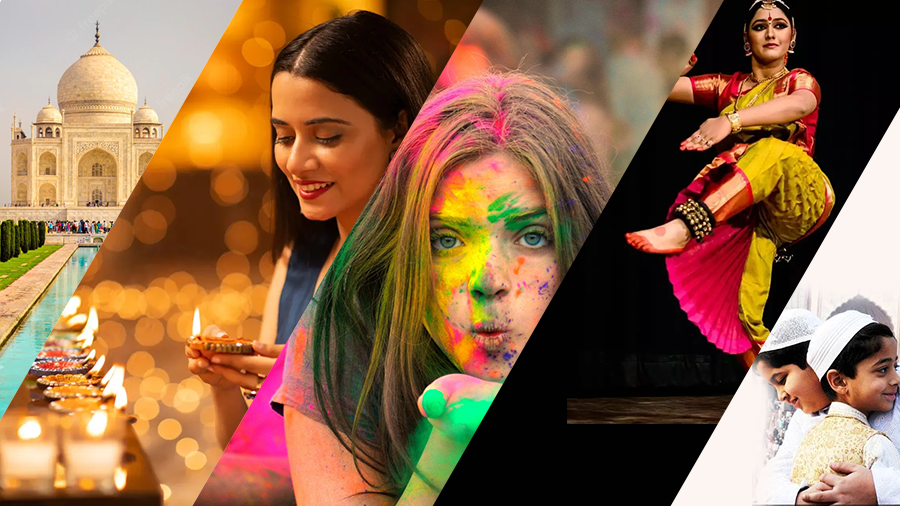
Is Uttar Pradesh’s Identity in Crisis? The Philosophical Debate on Modernity
- admin
- August 26, 2025
- culture, Uttar Pradesh
- 0 Comments
Balancing Tradition and Progress in India’s Most Populous State
Lucknow – Uttar Pradesh, the cultural heartland of India, is undergoing a profound transformation. As the state modernizes its economy and urban centers, questions arise about whether it is preserving its rich traditions or moving toward an identity crisis. The interplay between progress and heritage forms the core of an ongoing debate about Uttar Pradesh’s future trajectory.
Key Metrics
- Population: Uttar Pradesh has over 240 million people, making it India’s largest state in terms of population (Census 2011).
- Economic Growth: The state’s Gross State Domestic Product (GSDP) increased from ₹10.90 lakh crore in 2015-16 to ₹21.73 lakh crore in 2020-21, showing substantial growth (UP Government Data).
- Urbanization: Urban areas now make up 24% of the population, compared to 20% in 2001 (Census Reports).
- Cultural Sites: Varanasi welcomed over 1.5 crore visitors in 2022, while Ayodhya attracted 2 crore pilgrims in 2023 (Uttar Pradesh Tourism Department).
Modernization Efforts
Economic and Infrastructure Growth
Uttar Pradesh has made significant strides in economic development and infrastructure under recent government initiatives.
- Investment Proposals: During the UP Global Investors Summit 2023, the state secured commitments worth ₹35.5 lakh crore, expected to generate 93 lakh jobs.
- Key Projects: The Jewar International Airport, set to become Asia’s largest airport, and the Ganga Expressway, a 600 km highway project, exemplify the state’s push for connectivity and industrial growth.
Urbanization Trends
Urban growth has been a prominent aspect of Uttar Pradesh’s modernization, with cities like Noida, Kanpur, and Lucknow emerging as industrial and IT hubs.
- Digital Initiatives: Over 50 lakh tablets and smartphones were distributed under the Digi Shakti Program, boosting digital literacy and bridging the rural-urban divide (UP Government Report, 2023).
Cultural and Traditional Identity
Religious Heritage
Uttar Pradesh is home to major pilgrimage centers that define its cultural identity.
- Ayodhya and Varanasi: While the Ram Mandir in Ayodhya continues to draw millions, the Kashi Vishwanath Corridor in Varanasi has enhanced accessibility to one of India’s holiest sites.
- Tourism Revenue: Religious tourism contributed ₹1,200 crore to the state’s economy in 2023, reinforcing the importance of preserving these sites.
Traditional Art and Language
The state’s regional crafts and dialects are essential to its cultural fabric.
- ODOP Initiative: The One District, One Product (ODOP) scheme has revitalized traditional crafts like Varanasi silk and Moradabad brassware, contributing ₹1.56 lakh crore to exports in 2022-23 and supporting over 5 lakh artisans.
- Linguistic Marginalization: Dialects like Bhojpuri and Awadhi face diminishing use as Hindi becomes more dominant in education and governance.
The Philosophical Debate: Tradition vs. Modernity
Proponents of Modernity
Advocates for modernization highlight the necessity of economic growth and urbanization to improve living standards and create opportunities.
- Industrial Growth: Noida and Greater Noida have become economic powerhouses, attracting multinational corporations and contributing significantly to the state’s GDP.
- Technology Integration: Initiatives like Digi Shakti have propelled Uttar Pradesh into the digital age, empowering youth and rural communities alike.
Voices for Preservation
Critics argue that rapid modernization risks eroding Uttar Pradesh’s cultural identity and sidelining its traditional communities.
- Artisan Challenges: Small-scale industries often struggle to compete with mass production, threatening the livelihoods of craftsmen whose work embodies centuries-old traditions.
- Cultural Erosion: The commercialization of festivals and heritage sites risks reducing them to spectacles rather than preserving their spiritual and historical significance.
Government Initiatives Balancing Progress and Tradition
Tourism and Heritage Conservation
- Kashi Vishwanath Corridor: Completed in 2021 at a cost of ₹900 crore, this project has modernized one of India’s most sacred sites while retaining its historical essence.
- Ayodhya Development: The Ramayana Circuit aims to integrate religious tourism with infrastructure development, projected to increase regional tourism by 25% by 2025.
Support for Traditional Industries
- ODOP Expansion: The scheme now includes digital marketing training for artisans, helping them compete in global markets.
Challenges in Balancing Growth and Heritage
- Cultural Displacement: Urbanization projects often displace local communities and artisans.
- Environmental Concerns: Infrastructure projects like expressways raise concerns over deforestation and land use.
- Regional Identity: The dominance of Hindi risks sidelining regional dialects, weakening linguistic diversity.
Conclusion: Striking the Right Balance
Uttar Pradesh’s journey toward modernization is as much about preserving its heritage as it is about building a prosperous future. The state must navigate this path carefully, ensuring that development aligns with its rich cultural and philosophical traditions.
The choices Uttar Pradesh makes today will determine whether it emerges as a beacon of progress harmonized with tradition or risks losing the essence of its unique identity.


